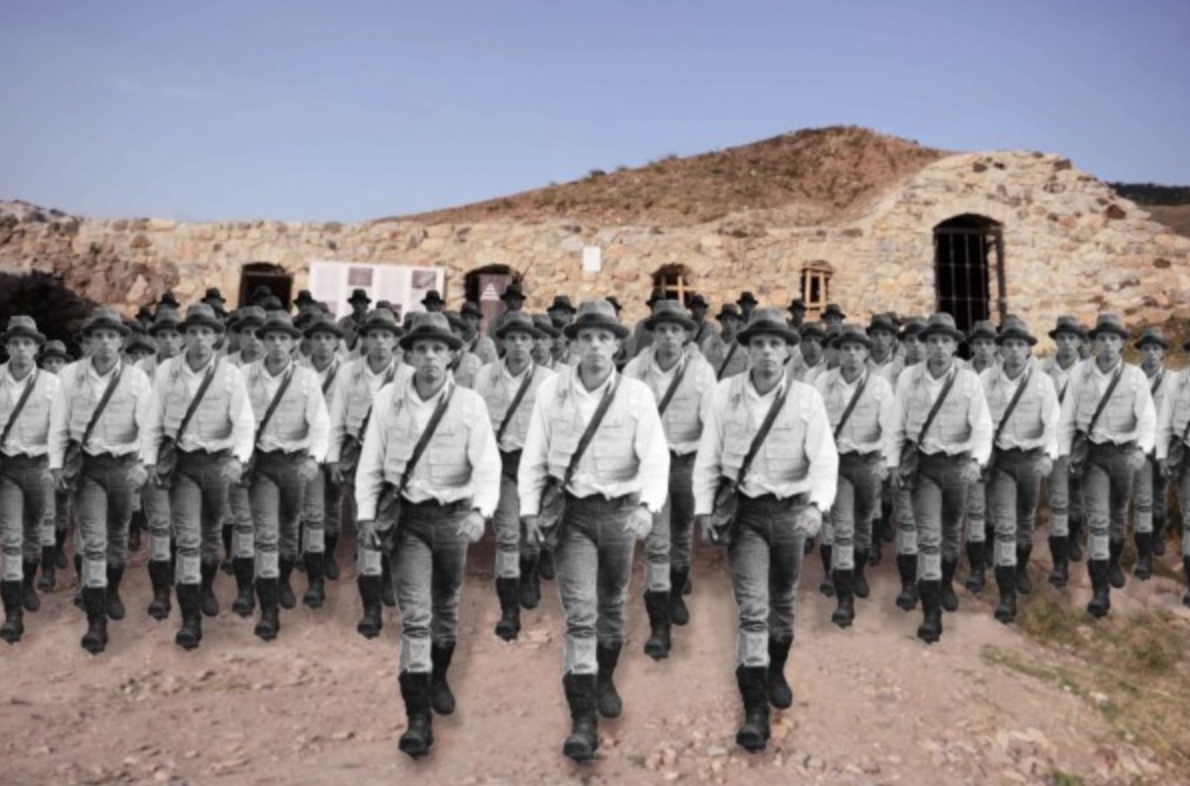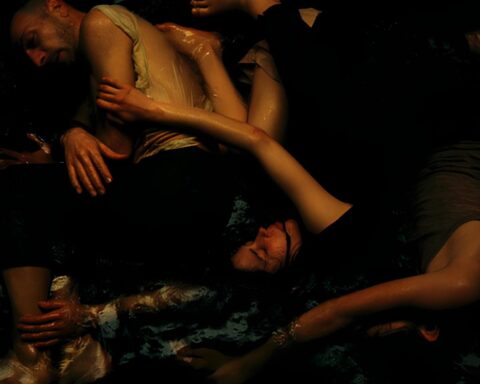“Art is the only power to free humankind from all repression.”
– Joseph Beuys
With these words we introduce The Revolution is Us, title of the second edition of the Autostrada Biennale Prizren, Kosovo, curated by Giacinto Di Pietrantonio, whom I interviewed and told us how it went.
In this edition 30 selected artists could bring their ideas about the “daily revolution” that is dear to Joseph Beuys. The title of the event comes from one of his works. I also interviewed two artists: Adrian Paci, a great international artist and the young artist, Giulio Alvigini.
Giulio is the author of Make Italian Art Great Again, a very popular page of memes. He defines himself in his artwork as a “young simple italian artist”, but he is much more. Giulio is a multifaceted artist, he is an experienced social media manager, a super content manager, a contemporary figure in the world of communication and advertising in particular, professional figures who create daily interesting and fun content to entertain the followers. The artist, with Make Italian Art Great Again, poses the italian curatorial scene in an ironic and sometimes overly edgy way. The memes are based on the life of artist who tries to promote himself through curators and art critics. From the preparation of a portfolio to the design of a personal exhibition. Daily adventures in the world of art seen from the eyes of a young artist.
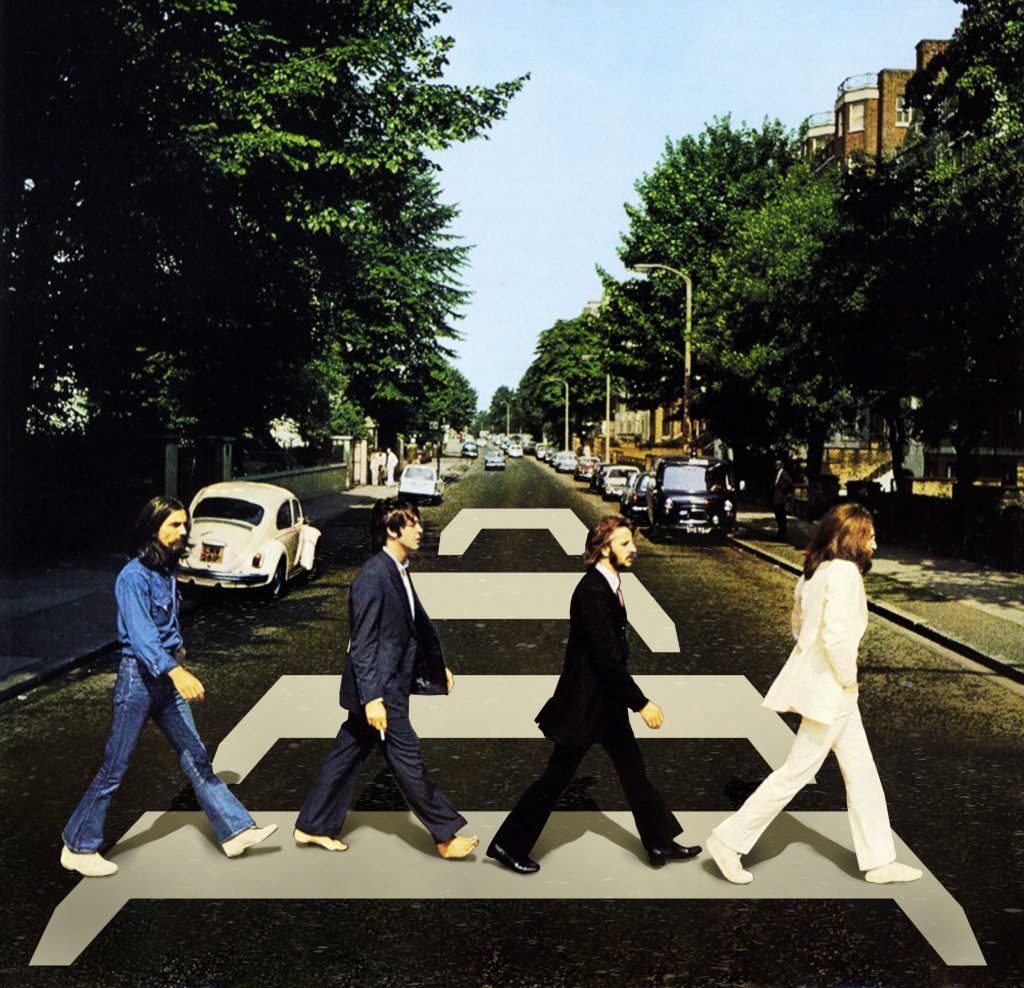
What do “revolution” and “start a revolution” mean?
Going on the impervious field of the revolution theme I begin quoting the voice taken from the Treccani Encyclopedia, of the term Revolution – “often indicated as a radical change of a state and social order, in its economic and political aspects – more meanings are indicated in based on various areas. In fact, in scientific use, we mean a body moving around another body. In astronomy we speak of a period of revolution, of duration of revolution. In economics, we talk about a price revolution. In medicine, revolution starts with the advancement of technology, in terms of care and surgical operations. In the historical context, the concept oscillates between two extremes of social and historical studies. We speak about the Revolution as single events that are unique and unrepeatable.”
In the artistic sphere, the revolutionary process – often referred to as aesthetic decay and meaningless – has instead seen the rebellion against an academic view of the world, linked to the search for perfection, of technique at the first place, through a different use of color, of the representation of bodies and Nature. The revolutionary process now brings the artists to find a deeper, intimate, iridescent story that changes according to the narrator. The upheavals in 19th century Europe, the events of the two world wars and the aftermath that followed led to no longer seeing the world with the same eyes.
To rebel, therefore, brings the question to determine the breaking point and to generate a reflection, a dialogue in the lightest cases, a change of course in the toughest clashes.
Like a knife through butter, we must collide with the history of the ’60s, first of all the events of 1964 at Berkeley Campus in California. The struggles continued until 1968, the year that burned Europe, with the French May and the student revolts in Italy. We will not deal with all the dynamics from which they originated, but the imposing force that they created in the political, social and cultural spheres. Entire generations that no longer recognized each other in traditional canons and asked fundamental changes. On April 4th, Martin Luther King, the leader of the Civil Rights Movement, was killed in Memphis. On June 5th, the leader of the democratic party Bob Kennedy was assassinated.
We cannot fail to mention another major cultural event on the other side of the world, this time in China, the Great Proletarian Cultural Revolution, under Mao Tse-tung. The ideological and psychological reform of Mao was also possible by mobilizing young people, especially those belonging to the working class and peasant, who opposed the “black” classes of intellectuals, who swept away “old habits, old ideas, old culture and old behaviors”.
These epochal changes, which took away “the past”, are now obviously poured into contemporary art, a mirror of the society’s translator, which from the USA to Italy shouts loudly POP ART. The Popular Art brings usual objects into everyday life. Today it seems obvious and so strange to think of common objects as artworks but did you ever hear your grandfather tell how he got the TV or washing machine? They are often absurd stories, the result of madness, of an almost heroic act, but it is not of the gesture to which one has to pay attention, but precisely to the object, revered in all the houses. This simple and banal comparison, to get closer to all production of those years that, from America, moves to Europe, which gives us Warhol’s Brillo Boxes, Campbell’s bean cans, the famous Marilyn serigraphs, world symbols that everyone remembers today.
In Italy, the cultural revolution in the name of the values imposed by consumerism, moves between multiple actors, giving rise to branches of new currents. Piero Manzoni, indeed a conceptual artist, but with nuances of thought, in an extreme sense, who looks at Pop Art. His famous Artist’s Shit, is the first to capture the situation by highlighting and criticizing the contemporary, where everything is a commodity. Italian characters of Pop Art were Mario Schifano, Mimmo Rotella, Franco Angeli, Giosetta Fioroni, Mario Ceroli, Enrico Baj and many others. It is an intricate period in which new artistic currents are born, they get tangled up, they meet, they collide. In Italy, in addition to Pop Art, other art forms come to life in the same period, Arte Povera and Conceptual Art, a current that welcomes Manzoni in Italy, precisely, and that moves first abroad, along an unknown path, one of its most emblematic representatives, Joseph Beuys.
German artist, pilot of the Luftwaffe, his art moves along a symbolic episode of his life, a plane crash in Crimea from which he managed to save himself thanks to the help of the nomadic people of the Tartars. From this experience he drew ecological feelings, a spiritual rebirth, so much so that he called himself the shaman of art. His figure contrasts with Andy Warhol in the way of seeing art. In fact, Beuys thinks of art as a pedagogy that has to mend the whole of human experience, and anthropology that values all art in human history.
Beuys’ work of conceptual actions is important not only for the Fluxus movement, but also for the birth of the Green party in Germany, for pacifist actions, to be against the use of nuclear weapons. In 1974 he will be fired by the Dusseldorf Academy for having organized a closed number protest at the university, co-founder of the Free International University for Creativity and Research. Continually searching for a harmony between man and nature, Joseph Beuys believed in the concept of human capital where creative work and “alienating” work are able to shape the world, hence a phrase that would have aroused many controversies, the provocative ‘Everyone is an artist’, only thanks to creativity and therefore Art, Man can benefit himself and Nature, thus introducing The Revolution Is Us. The artwork of 1971 is a giant picture representing a man, the artist, advancing with a sure step towards the observer (like the famous Quarto Stato). The idea was born in Naples, with the art dealer Lucio Amelio – creator of the Modern Art Agency – making the meeting between Beuys and Andy Warhol possible, which will remain in the history of art.
The image of The Revolution Is Us, is the emblem of Beuys’ first Italian solo exhibition, which was taken in the avenue of the entrance of Villa Orlandi in Anacapri. This symbolic photography, now, is the subject of the second edition of the biennial art curated by Giacinto Di Pietrantonio in Prizren Kosovo, inaugurated on July 20th 2019 and distributed in different places of the city.
The exhibition saw several leading artists, who were confronted with the territory including Apparatus 22 (Romania), Levent Bütüçi (Kosovo), Nemanja Cvianovič (Croatia), Lana Čmajčanin (Bosnia and Herzegovina), Mirza Dedač (Serbia), Jan Fabre (Belgium), Jakup Ferri (Kosovo), Lek M. Gjeloshi (Albania), Emre Hüner (Turkey), Hristina Ivanoska (North Macedonia), Lorena Kalaja (USA), Sanja Latinović (Serbia), Iva Lulashi (Albania / Italy), Mucci Comics – Marco Mucci and Matteo Pomanti (Italy), Fatmir Mustafa – Karllo (Kosova), Orkide Collective (Kosovo), Anatoly Osmolowski (Russia), Adrian Paci (Albania), Tommaso Pincio (Italy), Ilija Šoškić (Montenegro), Somer Şpat (Kosovo), Giuseppe Stampone (Italy), Lola Sylaj and Dardan Zhegrova (Kosovo), The Cool Couple – Niccolò Benetton and Simone Santilli (Italy), Francesco Vezzoli (Italy) and Driant Zeneli (Albania) and Giulio Alvigini (Italy).
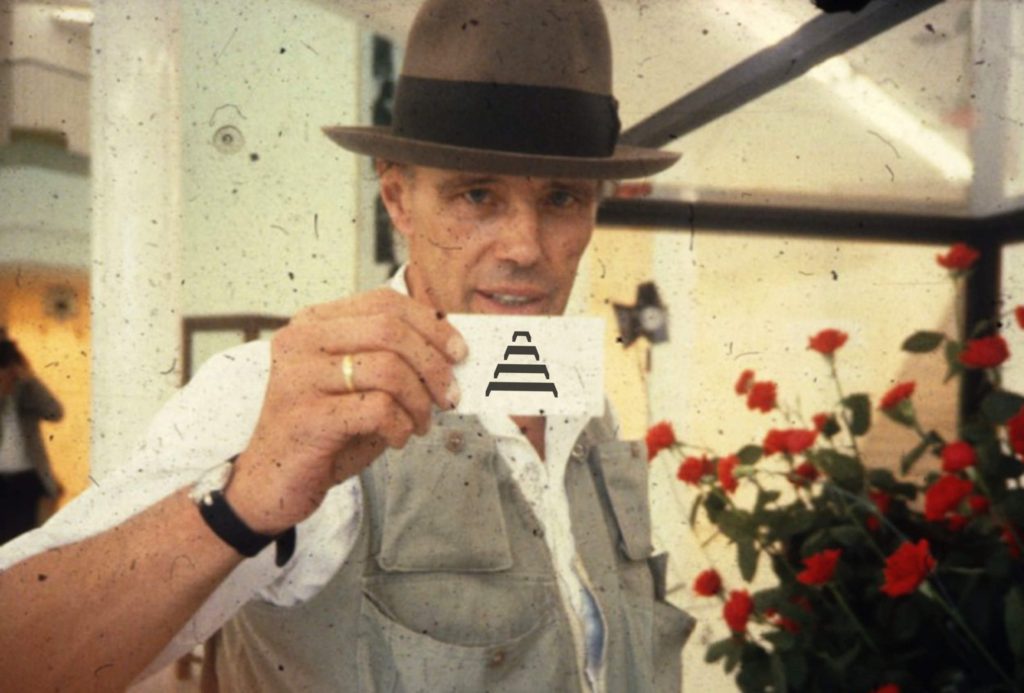
Here the interview with Giacinto Di Pietrantonio, Giulio Alvigini, and Adrian Paci.
Marika Marchese: Why did you think about this Beuys’ work?
Giacinto Di Pietrantonio: I believe that it is one of the most significant works of the artist Beuys and in general with whom I have lived for several years owning a copy. From the beginning I placed it in the entrance hallway of my apartment, not hanging but resting on the ground, so its walking appears more realistic. In fact, he seems to come to meet me every time I come home and comes after me every time someone comes to visit us. In short, it is a work of meeting and welcoming.
MM: What kind of revolution do you feel you are leading? Is this a personal revolution?
Giacinto Di Pietrantonio: Certainly a personal revolution, on the other hand art always starts from a linguistic and poetic revolution, which can sometimes even have repercussions on the social, but it is the linguistic data that counts first. In fact when I proposed the title The Revolution is Us, the organizers took a leap on the chair, because for them the revolution is linked to Communism of which they have not much released themselves. When I explained to them that for me the meaning was that of a poetic artistic research, of the revolutionary artist as a creative individual they were strongly impressed and relaxed.
Giulio Alvigini: No, but maybe the mess in my bedroom needs a revolution.
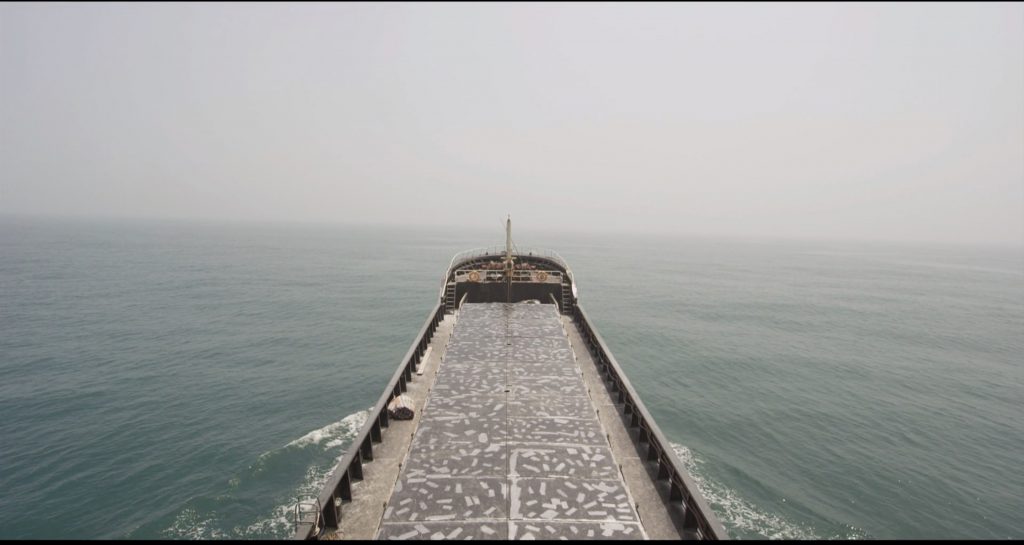
Adrian Paci, The column, 2013 Single-channel digital video, color, sound / 25’40” 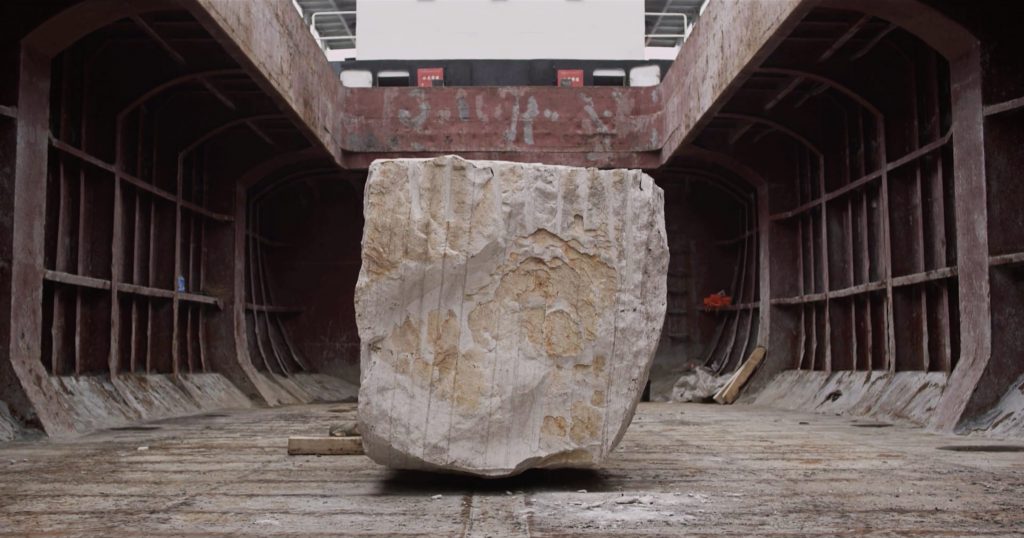
Adrian Paci, The column, 2013 Single-channel digital video, color, sound / 25’40” 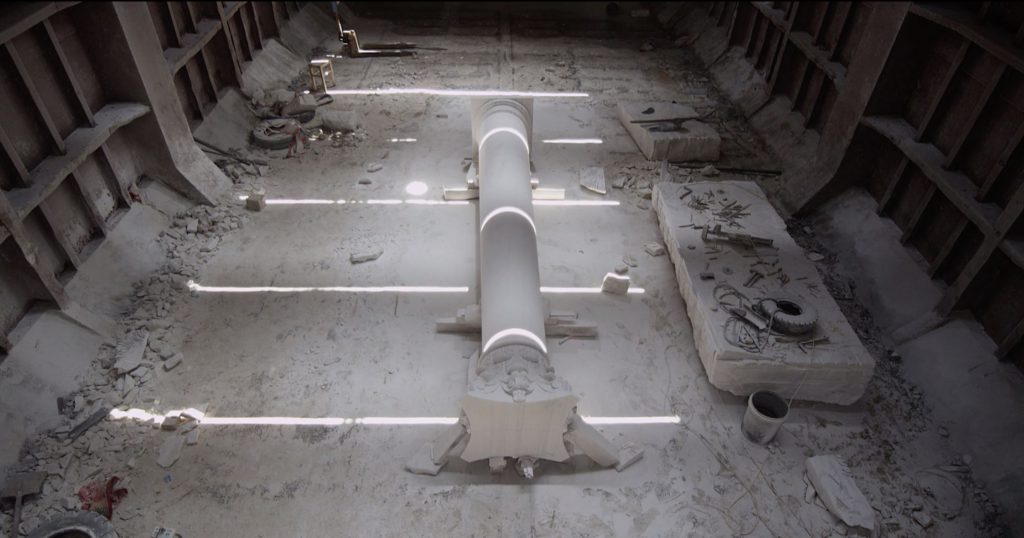
Adrian Paci, The column, 2013 Single-channel digital video, color, sound / 25’40”
MM: How much do you feel like a revolutionary artist? A young artist like you, entered among the 222 on which to believe, what are his goals?
Giulio Alvigini: I don’t feel like a revolutionary artist, I prefer to leave to others a task so rich in responsibility, how to renew a cultural condition that is by now static and harmful, actively rehabilitating it. It seems more interesting for me to waste time behind the gossip of the art world, the superficiality, the hysteria and the contradictions that our system embodies: I do not solve problems, I am interested in telling what I see. At most, the problems I try to create.
Being considered one of the 222 emerging artists on which to invest (money) – or to invest (with the car – jokingly), depends on your point of view – it is certainly a nice satisfaction but only a momentary one, it is nothing more than one of the micro pieces that combine in different measures to compose the mosaic of the career of an artist. Goals? Escape from the labels and remain consistent in my inconsistency.
I am very happy to have participated in the Kosovo Autostrada Biennale, but I don’t think I have contributed emotionally with anything significant, apart from the simple “funny pictures”.
MM: Who is the artist of the future, of change? What features do they have?
Giacinto Di Pietrantonio: I am often asked this question which I always answer in the same way. I don’t know. If I knew it I’d be the artist. On the other hand, I don’t believe in an artist, or in an art with only one direction, history teaches us that they are multiple. An anti-renaissance corresponds the renaissance, a romanticism to neoclassicism and so on. However, I mostly know a good artist when I see him.
Giulio Alvigini: I believe that the figure of the artist today is strongly trivialized, it is a social status to which many – but more precisely too many – aspire and that due to this populist push is likely to suffer a bad influence on the reputation of those who truly contribute in a healthy and intelligent way to this wonderful social setting that we call “art”. I don’t know how the artist of the future can be configured but I imagine – and I hope – that he suffers the right and necessary re-dimensioning within the common perception, too often overrated and excessively praised.
We have forgotten that the artist is a courtier, working for power and to celebrate its splendor, he is not a hero or the forerunner of visions and future scenarios. My advice for those who want to pursue an artistic career is to nip this crazy, senseless and self- destructive madness in the bud.
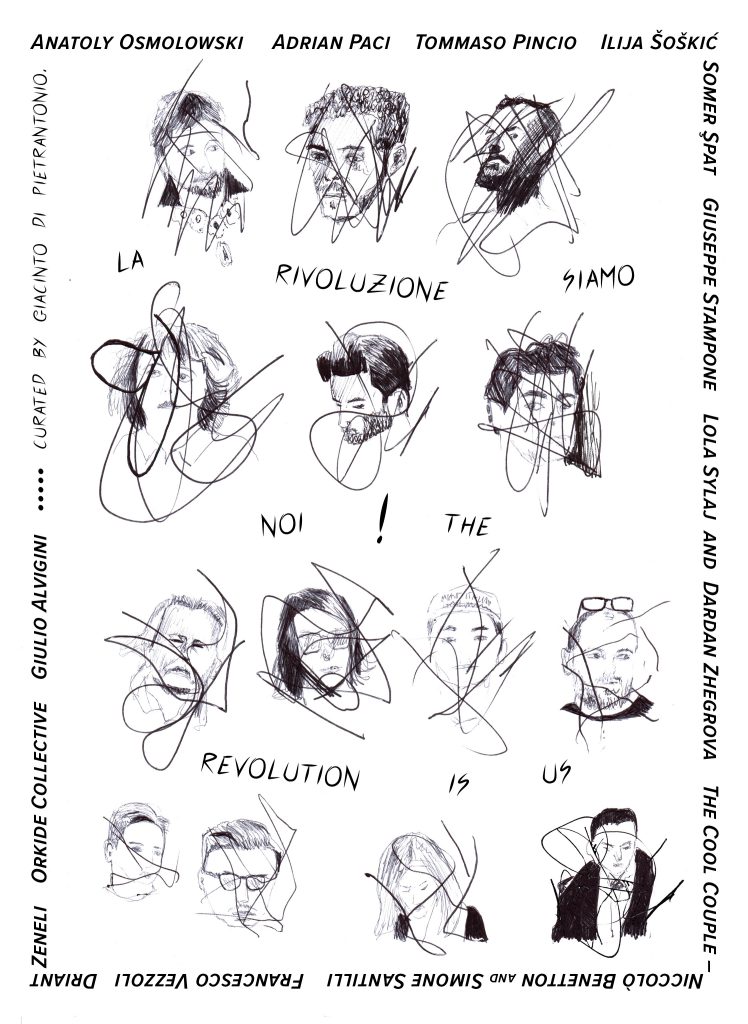
Marco Pio Mucci and Matteo Pomati, Sgomento, 2019 Independent publishing project which presents a graphic novel designed by Mucci as the narrator for the second edition of Autostrada Biennale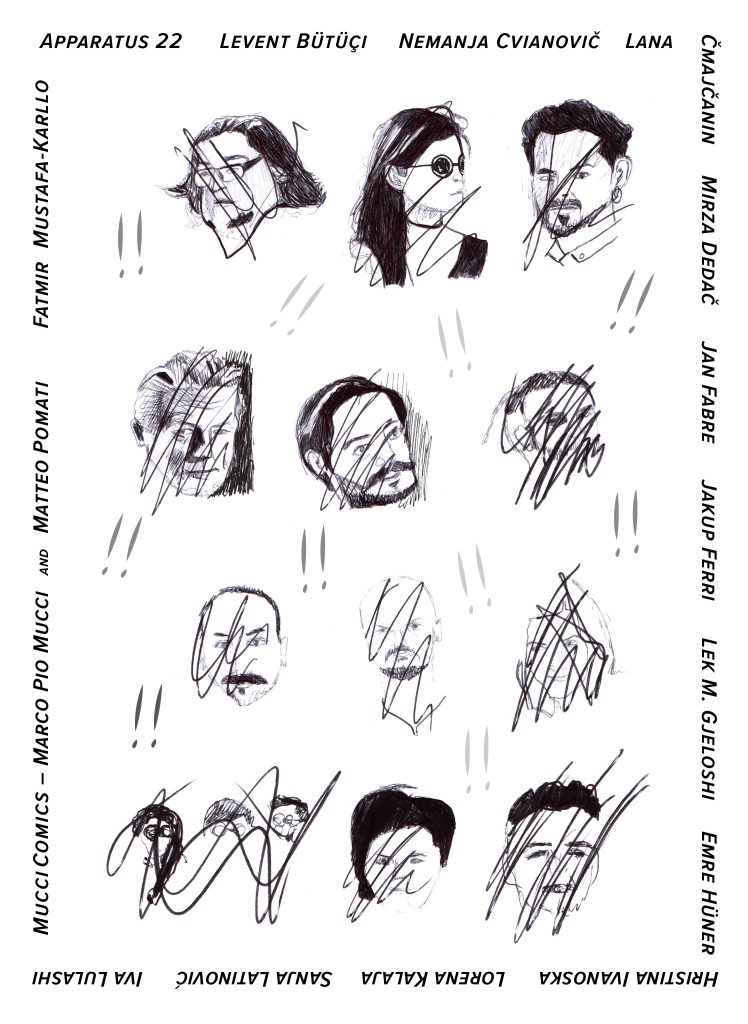
Marco Pio Mucci and Matteo Pomati, Sgomento, 2019 Independent publishing project which presents a graphic novel designed by Mucci as the narrator for the second edition of Autostrada Biennale
MM: Do you have advice for those who want to make art?
Giulio Alvigini: Advice is created to be ignored.
Adrian Paci: Since 2003 I teach and continue to “give advice” to younger artists. There is no generic advice packaged for everyone. It is always a question of standing before specific things, with a specific sensitivity and feeling a specific potential that could take a specific form thanks to a specific action.
MM: In the case of Giulio, some memes, how did you present the works? Adrian, what did you present?
Giulio Alvigini: Today very often the communication of art proves to be more important and interesting than art itself: for some time now I have been convinced of this statement and I try to practice it whenever the occasion arises.
When Giacinto Di Pietrantonio invited me to present a work for the Autostrada Biennale, I immediately understood that it was the right international stage to structure the realization of a work that no longer coincided with the material production of an object, but configured instead in the planning and management of an “alternative” communication plan for the second edition of the Kosovo Biennale. I thought of a “memetic” communication, a cosmology of viral and sometimes absurd contents that told this important biennale in a non-canonical and institutional way. All presented exclusively on the official social platforms (Instagram and Facebook) of A.B. – with the support of my Make Italian Art Great Again – and in the paper catalog of the exhibition. Ultimately: “Can a social media manager be considered an artist?” I don’t think so, but in the end I try anyway and I enjoy it a lot.
Adrian Paci: I didn’t do a new work, but I showed my video The Column for the first time in Kosovo and Prizren.
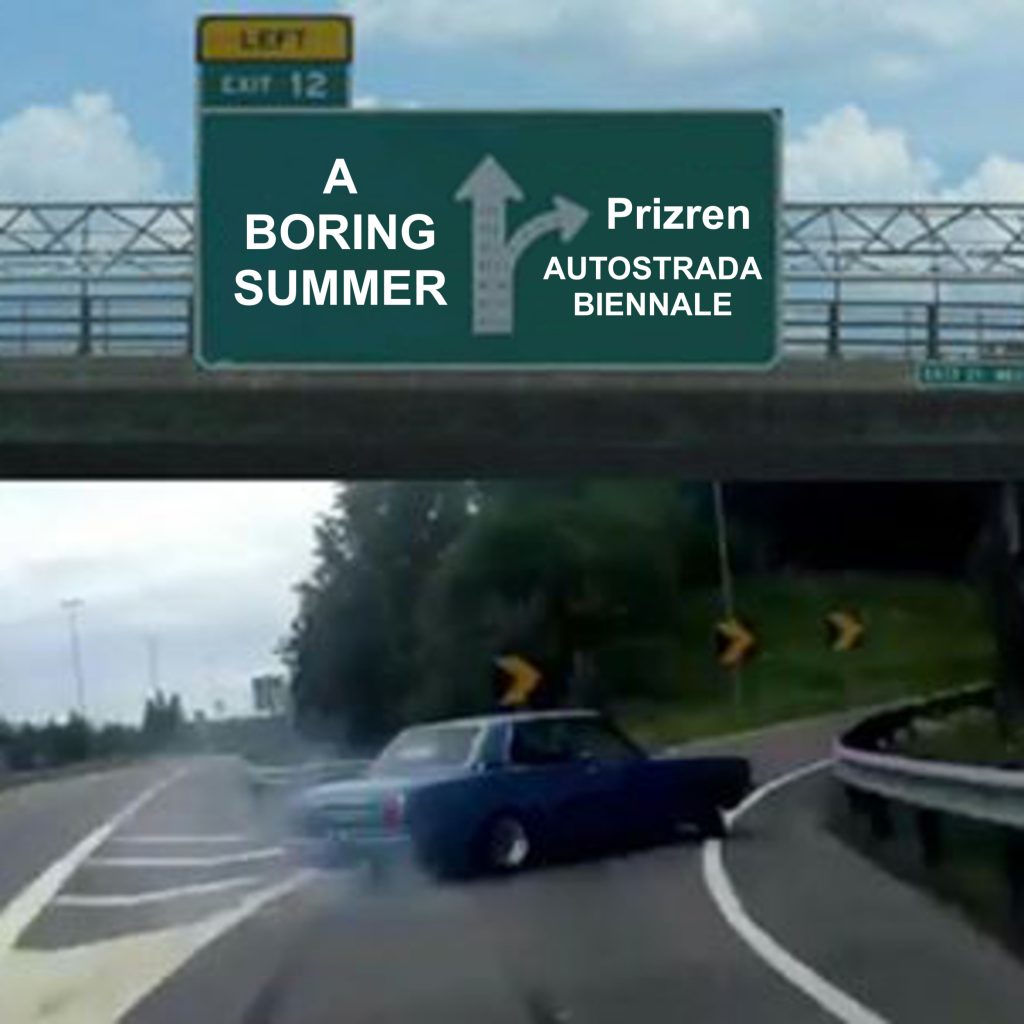
MM: What is the purpose of Autostrada Biennale?
Giacinto Di Pietrantonio: It aims to contribute to the renewal and construction of a young nation like Kosovo that needs so many things including a Biennale that in other parts could be superfluous. Here nothing is. And then to present itself as a beautiful and significant exhibition that brings together different cultures that in reality are sometimes in contrast, while here ethnicities, religions, cultures coexist and create worlds.
The revolution is above all cultural. Everything starts from there. If there is no culture there is a clash. If there is culture there is sharing and as mentioned before, art serves this process which in this sense is revolutionary.
MM: How did these days go? What did you imagine?
Giacinto Di Pietrantonio: If it refers to the days of work and inauguration, but now also in continuation, I say that they have gone and are going very well, despite the difficulties of a young country where practically no contemporary art system exists, except the national museum of the capital Pristina. The enthusiasm with which the young organizers and their equally young entourage are contagious and bode well for the future, a better future. No coincidence that this was also understood by the organizers of Manifesta who chose Pristina and Kosovo for the 2022 edition.
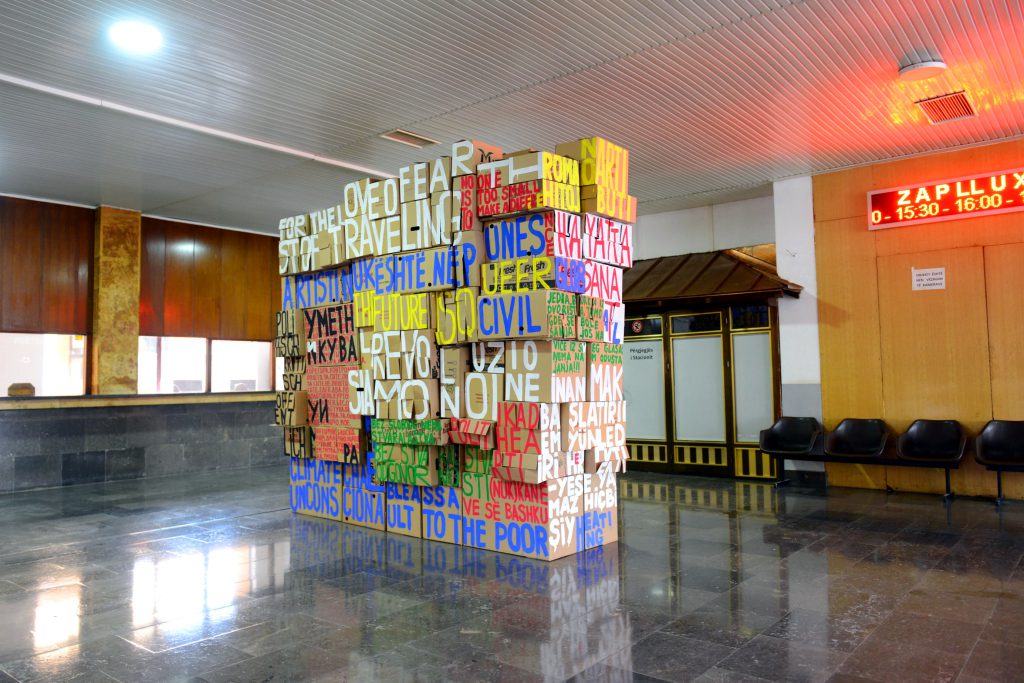
MM: What contribution do you intend to make to Kosovo?
Giacinto Di Pietrantonio: As already mentioned, to lend a hand to the process of transformation and modernization of a country where there have been fratricidal clashes, but that people have every intention of leaving behind as it shows for those who go to Kosovo, in which the traces of the recent war are almost no longer visible, in which there is an active life aimed at cohabitation and modernization without leaving behind tradition. Among other things, Prizren, the city where Autostrada Biennale is held, is a highly stratified city: of Roman, then Byzantine, medieval and Ottoman foundations. A place that shows that coexistence and the future are possible.
MM: Revolution is an uncomfortable word, as you said.
Giacinto Di Pietrantonio: It is not uncomfortable, it is simply necessary, so much so that its political sense begins with the French Revolution, whereas before it had and also has a cosmic meaning in the sense that in astronomy we speak of the Earth and other planets that perform a motion of rotation around themselves and one of revolution around the sun and the galaxies revolve in revolution in the universe. As you can see, it also has a cosmic meaning which is what I also look for in art.
MM: In Ernst Renan’s book What is a nation? – in one step, the writer gives his idea, stating ‘that a nation is a soul, a spiritual principle, thinking of consulting a population if it is disputed. A great aggregation of men, generous in heart, creates a moral conscience called nation.” Artists and art can somehow help the process of identifying people with the land they live for centuries? Can art identify a nation? What do you hope for this land?
Giacinto Di Pietrantonio: Affirmable statement, in fact, what gives a nation the soul more than language and art? Do we not remember the great civilizations through art and culture? When we weigh in Greece and Rome we think of its art and philosophy, so for the other periods the Gothic Middle Ages, and so on. Thus the stratified Kosovo also seeks its modern soul with the Autostrada Biennale.
Giulio Alvigini: It is a land that has managed to get back up very well, despite a politically turbulent and complex past; the twenty years that separate this population from the armed conflict managed to permanently suture the wounds caused by tensions and contrasts. Autostrada Biennale is one of the most effective tools – and at the same time a symptom – of the well-being that this nation is deservedly gaining. I hope for such serenity in this splendid land and a little less trash advertising.
Adrian Paci: I see that Renan had in mind a nation of good people, “great aggregation and healthy spirit” … Unfortunately it is not always so and a nation can also be small, often it must cohabit even with its own contradictions and own weaknesses. Living together does not mean resigning oneself, therefore we work with the hope that the action of people can offer a better future, especially to lands like ours, often harshly condemned by history. What do I hope for? A future of more harmonious rhythms.
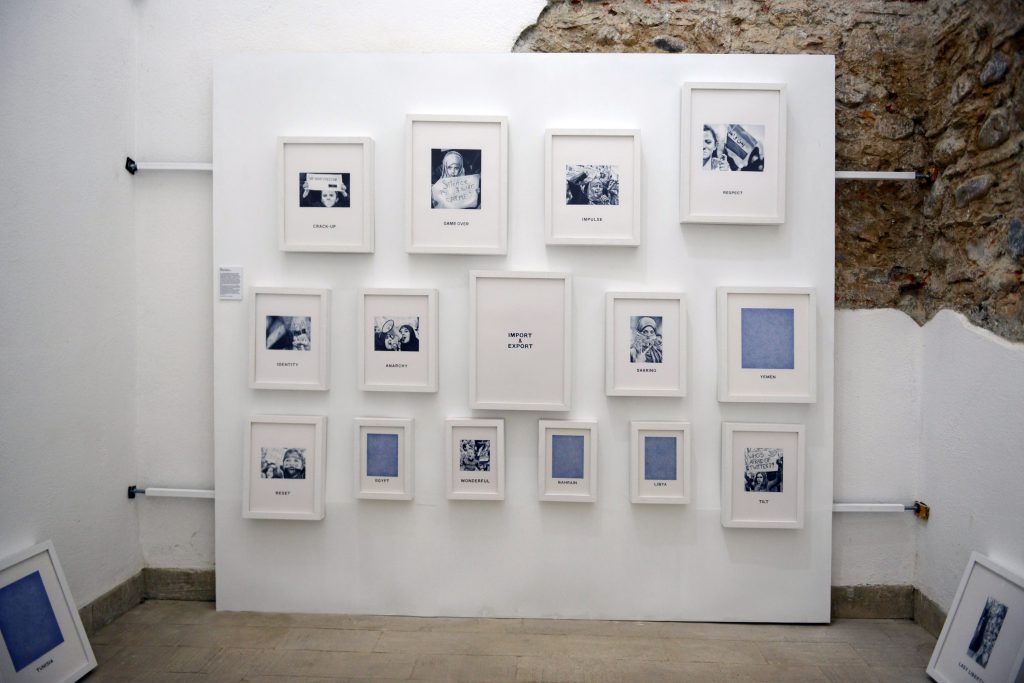
Drawings on paper, 24 modules. Autostrada Biennale – International Contemporary Art Exhibition curated by Giacinto Di Pietrantonio
MM: Art is a mirror of our time and artists often become witnesses and spokespersons for a microcosm that is at times interior, others linked to a narration of that given historical moment. Making revolution, often means changing public opinion. As an artist, what do you think about it?
Adrian Paci: I think that art can intervene on our ability to look but also to imagine. It is not my goal to change public opinion but to reflect, first of all, on the hidden potential behind the surface of things to emphasize or highlight them. If this thing could be of use to someone besides myself I would be happy but I believe it is wrong to take on a responsibility that does not come from your deep and intimate need.
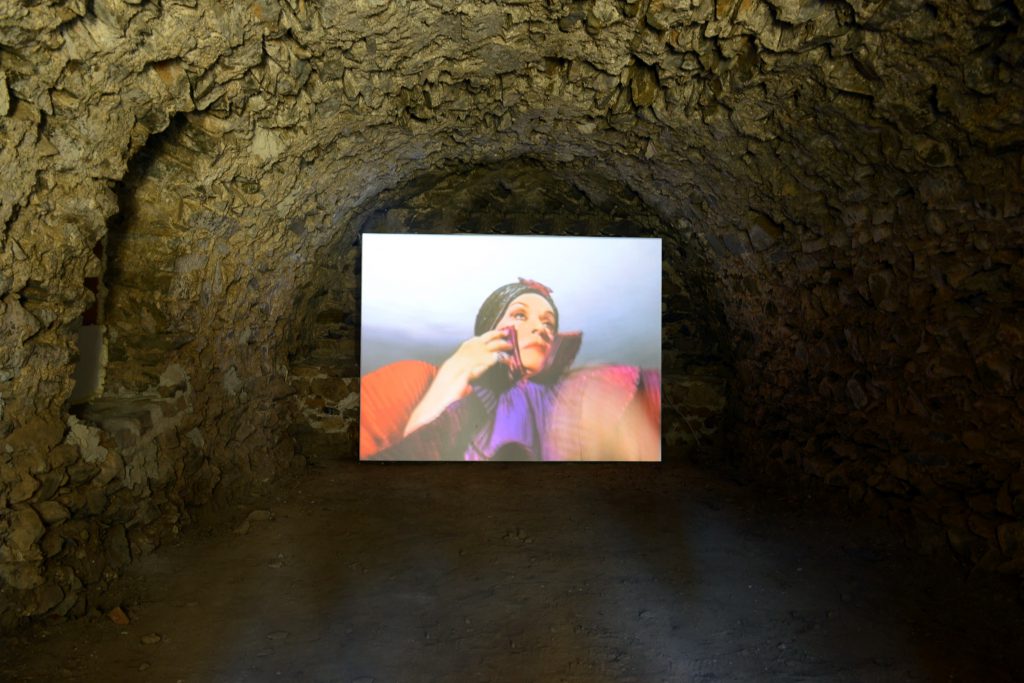
MM: Art could have the strength to change the world, like journalism, but currently appears as a mirror of change. The work of art should be the starting point of a revolution and not just the story of a drama. Currently, what do you think about it?
Adrian Paci: I am reminded of a wonderful reply by Gino de Dominicis who answered a question about the position saying: “I sit in a sitting position when I do small paintings and standing when I do large paintings”. To try not to close with a funny joke I would say that first of all I am not so convinced that art should be measured by journalism to change the world.
As I have already told you, art could offer a different point of view, it could give shape to a different sensibility, to a different expressive modality and this is not at all little. As you may have understood, I am not sympathetic to artists who puff their chests of pretensions to change and then deflate, often producing obvious solutions and obvious formulas. I believe that today’s art can do nothing more than the art of 3,000 or 300 years ago, but this is by no means a pessimistic view. I believe that in the past centuries and up to the present day art has left wonderful traces that, obviously, cannot be celebrated but must be continually renewed.
The actions of artists affect our thinking, set an example in change. Therefore, the mission of art should be to improve the world by not only telling it, raising public awareness, making new scenarios possible. I see that he has a low account of the story. Telling is not at all a process without consequences both on the perception of the past and on the imagination of the future.
MM: Can you tell us about your current projects?
Adrian Paci: I am finishing a video with a group of unemployed people with whom I had worked 15 years ago on another work called Turn On. The new video is titled Prova.
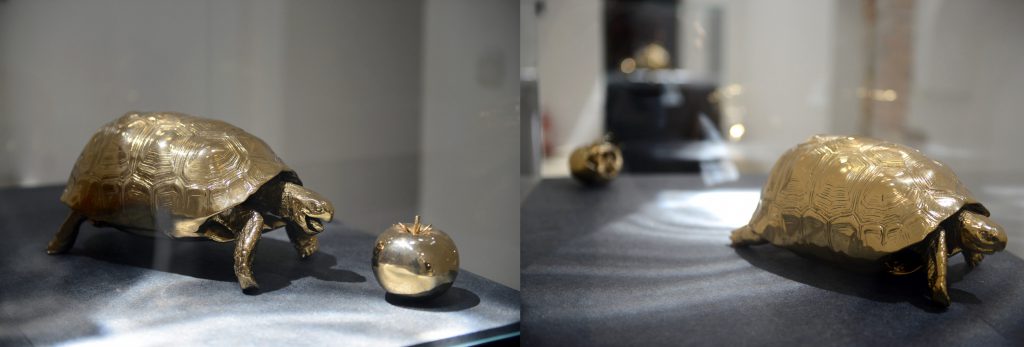
Exhibition curated by Giacinto Di Pietrantonio


